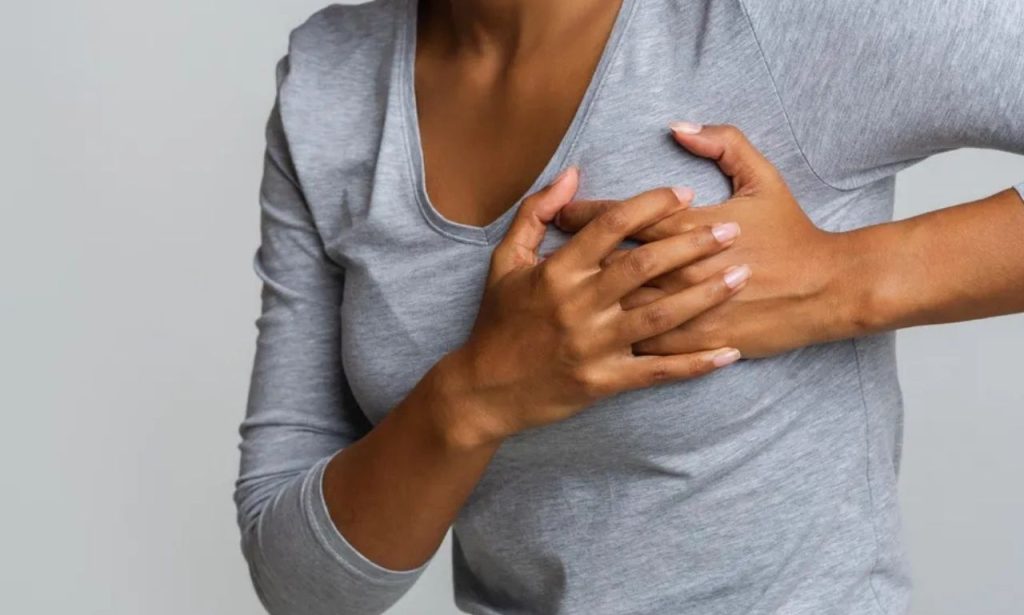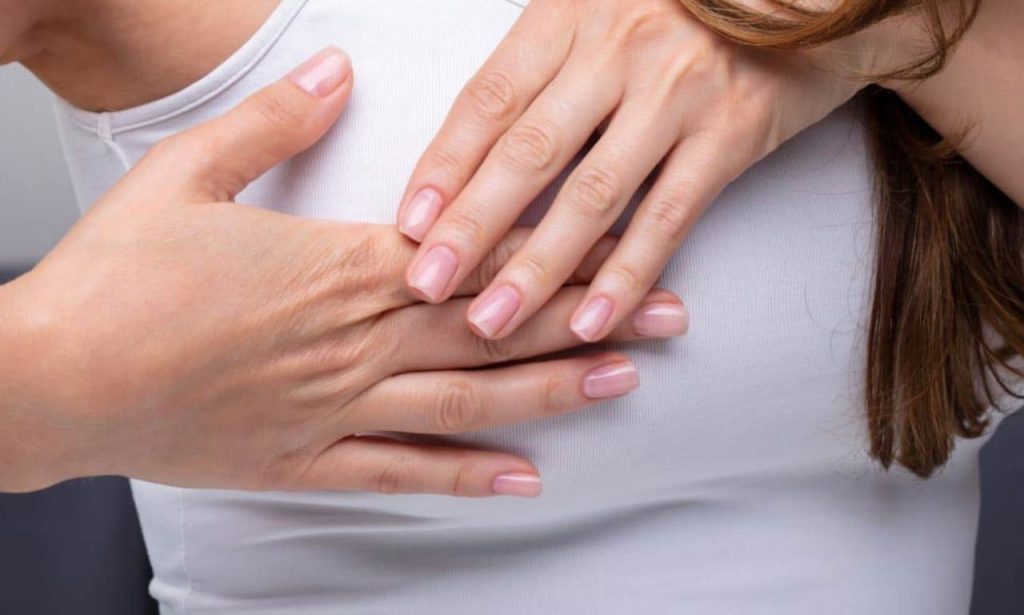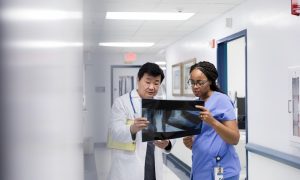Breast pain can stop you in your tracks. That sudden twinge or ache in your left breast might send your mind racing. Many women immediately fear the worst. Is it cancer? Should I panic? Take a deep breath. Left breast pain rarely signals cancer. Breast pain alone is hardly ever the first sign of breast cancer—various conditions cause this common symptom. Your monthly cycle might be the culprit. Maybe it’s muscle strain from yesterday’s workout. Perhaps something more specific needs attention. Understanding possible causes helps ease unnecessary worry. This article explores four things that pain in your left boob might mean. We’ll discuss symptoms, treatments, and when to call your doctor. Knowledge empowers you to make informed decisions about your health. Let’s look at what might be causing that uncomfortable feeling in your left boob.
Pleurisy

Pleurisy occurs when the tissue between your lungs and chest wall becomes inflamed. This thin tissue serves as a protective layer for your lungs. When inflammation strikes, every breath can trigger sharp pain. The discomfort typically worsens when you inhale deeply. You might notice pain specifically on your left side. Many patients describe the sensation as stabbing or knife-like. Coughing and sneezing intensify the pain dramatically. Even laughing might become painful with pleurisy.
Causes of Pleurisy
Several factors can trigger pleurisy in otherwise healthy people. Viral infections are among the most common causes. These include the flu and certain respiratory infections. Bacterial pneumonia sometimes leads to pleurisy as a complication. Tuberculosis, though less common today, remains a potential cause. Autoimmune conditions like lupus may inflame the pleural tissue. Some medications occasionally trigger inflammation as a side effect. Chest injuries can damage the pleural lining directly. Even lung cancer sometimes manifests with pleurisy symptoms first.
Treatment Options
Treatment focuses primarily on addressing the underlying cause. Your doctor might prescribe antibiotics for bacterial infections. Anti-inflammatory medications help reduce pain and swelling. Over-the-counter options like ibuprofen often provide relief. Some patients benefit from prescription-strength pain management. Rest plays a crucial role in recovery from pleurisy. Avoiding strenuous activities gives your body time to heal. Applying heat to the affected area soothes discomfort for many. Your doctor might recommend breathing exercises during recovery. Most cases improve within a few weeks with proper care.
Precordial Catch Syndrome
Precordial catch syndrome causes sharp, intense pain in the chest area. This condition frequently affects children and young adults. The pain typically strikes suddenly without warning. Many describe it as a stabbing sensation below the left breast. The discomfort often occurs during rest or while sitting quietly. Deep breathing makes the pain worse temporarily. Episodes generally last between a few seconds and three minutes. The pain vanishes as quickly as it appeared. Despite its alarming nature, this syndrome isn’t dangerous.
Understanding Precordial Catch Syndrome
Precordial catch syndrome remains somewhat mysterious to medical professionals. Some believe it stems from irritated nerves between the ribs. Others suspect muscle spasms in the chest wall. Poor posture possibly contributes to its development. The condition doesn’t indicate heart problems or serious illness. Anxiety doesn’t cause it but might make episodes more frequent. Young people often outgrow this syndrome over time. Physical activity rarely triggers these painful episodes. Stress and growth spurts sometimes coincide with increased symptoms.
Managing the Pain
No specific treatment exists for precordial catch syndrome. Shallow breathing during episodes can minimize discomfort. Changing positions often helps relieve the pain faster. Gentle stretching of the chest muscles prevents some episodes. Maintaining good posture reduces occurrence in many people. Staying hydrated supports overall chest health. Regular exercise strengthens chest muscles supportively. Most importantly, understanding its benign nature eases anxiety. Patients learn to recognize and wait out brief episodes. Medical attention becomes necessary only if additional symptoms develop.
Pericarditis
Pericarditis involves inflammation of the pericardium, the sac surrounding your heart. This condition can cause significant pain in the left chest area. The discomfort often radiates to your left shoulder and breast. Many patients describe a sharp, stabbing sensation. Sometimes the pain feels more like pressure or fullness. Sitting upright or leaning forward typically eases the discomfort. Lying down makes the pain worse for most sufferers. Deep breathing might intensify the painful sensation. Fever sometimes accompanies pericarditis symptoms.
Causes and Risk Factors
Viral infections commonly trigger pericarditis in healthy individuals. Bacterial infections less frequently cause this condition. Heart attacks can damage the pericardium as a complication. Certain autoimmune disorders increase the risk of pericarditis significantly. Kidney failure sometimes leads to inflammation around the heart. Some medications occasionally cause pericardial inflammation. Previous heart surgery raises your risk for developing this condition. Cancer treatments occasionally irritate the pericardial tissue. Chest injuries might damage the protective heart sac directly.
Treatment Approaches
Treatment aims to reduce inflammation and manage pain effectively. Anti-inflammatory medications form the first line of treatment. Colchicine helps prevent recurrent episodes in many patients. Corticosteroids treat severe cases when other medications fail. Rest remains essential during the acute phase. Avoiding strenuous activity protects your healing heart. Your doctor will monitor for complications during recovery. Most patients improve within weeks with proper treatment. Hospital admission becomes necessary for severe symptoms. Follow-up care ensures the inflammation resolves completely.
Costochondritis

Costochondritis refers to inflammation where the ribs meet the chest bone cartilage. This condition commonly causes pain in the left breast area. The discomfort ranges from mild to severe intensity. Many describe sharp, aching pain that comes and goes. Pressing on the affected area typically increases tenderness. Deep breathing might worsen the discomfort temporarily. Coughing or sneezing can trigger painful flare-ups. Movement involving your chest wall aggravates symptoms. Despite its painful nature, costochondritis doesn’t damage your heart.
What Causes Costochondritis?
Several factors may contribute to the development of costochondritis. Physical strain sometimes triggers this painful condition. Heavy lifting occasionally leads to cartilage inflammation. Coughing fits might strain the connections in the chest wall. Upper respiratory infections sometimes precede symptoms. Direct injury to the chest potentially causes inflammation. Certain physical activities strain the costal cartilage. Fibromyalgia patients experience costochondritis more frequently. Women develop this condition more often than men. Repetitive arm movements sometimes irritate the rib connections.
Finding Relief
Treatment focuses on managing pain while inflammation subsides naturally. Over-the-counter pain relievers reduce discomfort effectively. Heat application soothes painful areas for many patients. Rest helps prevent aggravating the inflamed cartilage. Avoiding activities that worsen pain speeds recovery. Gentle stretching maintains mobility without increasing inflammation. Physical therapy benefits some chronic cases significantly. Posture improvement reduces strain on chest connections. Most episodes resolve within weeks or months. Recurrent cases might require further medical evaluation.
Conclusion
Left breast pain rarely signals something serious. The four conditions we’ve discussed explain many cases. Pleurisy involves inflammation that affects the lining of your lungs. Precordial catch syndrome causes brief, sharp pain without danger. Pericarditis inflames the protective sac around your heart. Costochondritis refers to inflammation where the ribs connect to the chest bone. Understanding these causes helps put worries into perspective. Most require simple treatments and time to heal. Your body often signals when something needs medical attention. Severe, persistent pain warrants a doctor’s evaluation. Breast pain with fever requires prompt medical care. Trust your instincts about your own body. Regular breast health checks remain important regardless. Knowledge empowers you to distinguish between concerning and normal pain. Your healthcare provider remains your best resource for specific concerns.
Also Read: How to Make Herbal Tinctures
FAQs
Most breast pain isn’t serious. See a doctor if pain persists or comes with fever, redness, or discharge.
Yes. Stress tenses muscles and worsens inflammation, potentially causing or intensifying breast pain.
Cyclical breast pain related to hormonal fluctuations is common and typically harmless.
Sometimes. If pain comes with shortness of breath, nausea, or sweating, seek emergency care immediately.




